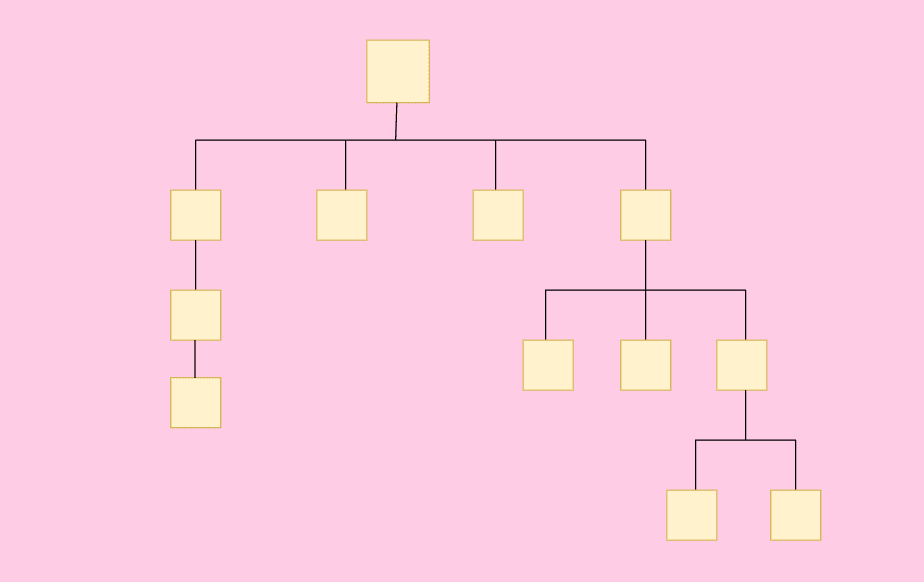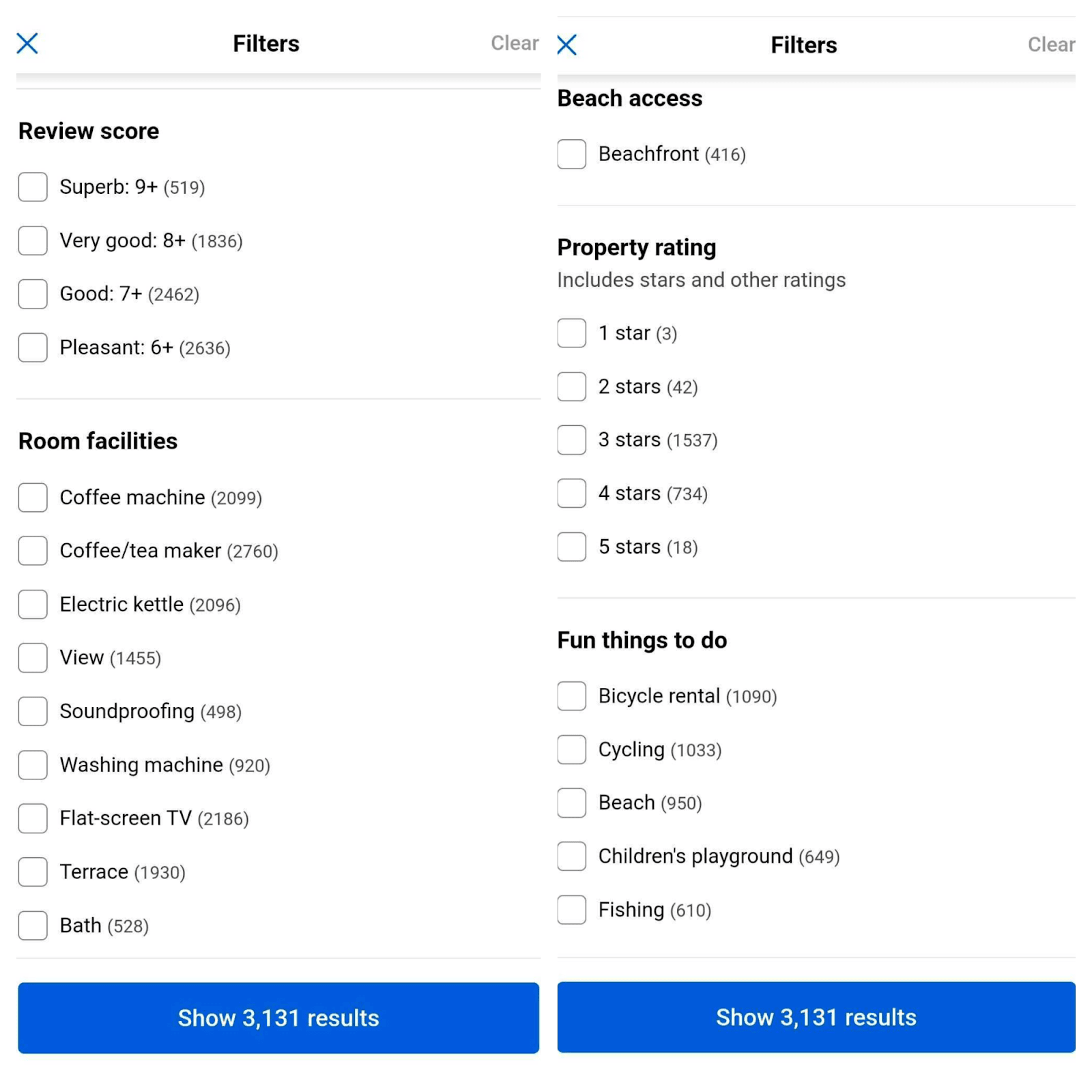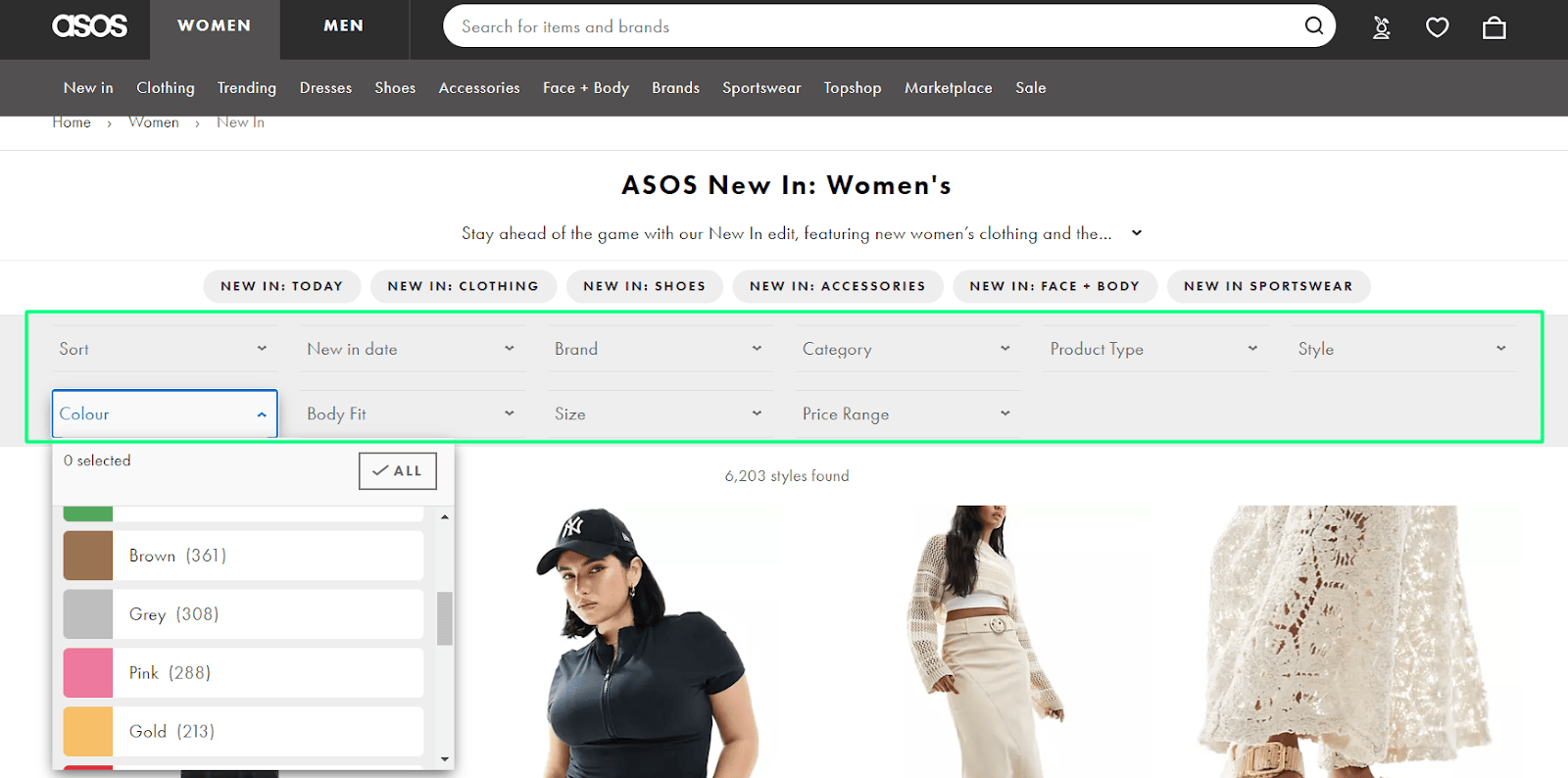Everything You Need to Know About SEO Taxonomy

So, you’ve optimized your web pages, invested time and effort in creating tons of articles and earning backlinks, but your SEO KPIs are still failing. What could be the issue?
Your site taxonomy is likely the hitch. This crucial yet often overlooked element of search engine optimization tactics is related to website structure. When it’s poorly organized, users and web crawlers will struggle to navigate your blog, store, or service pages.
A good SEO taxonomy is like a detailed roadmap, where every piece of content is strategically placed so search engines can index and rank your pages correctly and visitors can easily find what they need.
In this article, we’ll explain taxonomy and why it’s important for your website. You’ll also learn some useful tactics for creating a user- and SEO-friendly taxonomy.
Chapters
What is Taxonomy in SEO?

The term taxonomy comes from biology and refers to classifying organisms into different groups based on common traits. In relation to a website, taxonomy focuses on organizing digital content on a granular level, creating hierarchies and connections between different content types.
An intuitive and logical organization, coupled with optimized website speed, makes it a breeze for visitors to browse through and understand the information, which is essential for SEO. Working with an experienced SEO agency like Embarque.io can help ensure your website’s taxonomy is both user-friendly and optimized for search engines.
People will actively interact with a site if there’s no friction in the navigation flow. Moreover, the more users engage with the content, the lower the bounce rates you have.
SEO taxonomy takes the website structure a step further and organizes content not just for human visitors but for crawlers as well. It has a two-fold purpose:
- improve user experience;
- boost the website’s rankings in search results.
As the experience of top SEO companies in USA shows, an online store with a large inventory can use SEO taxonomy to divide products by top-level categories (Women’s, Men’s, Kids’ clothing, Accessories, etc.) and subcategories (Shirts, Pants, Shoes, and so on). These subcategories can further be broken into smaller groups by brand, color, or other criterion.

Such meticulous structuring makes it easier for search engines to crawl and index the website and for customers to search for goods.
Categories (broad groups) and subcategories (more specific sections) aren’t the only elements contributing to flawless navigation and crawlability. Other crucial taxonomy SEO components include:
- Tags. These keywords or phrases elaborate on the topic and help group content by specific subjects or characteristics, regardless of the broader category it falls into. For instance, “all-season wear”, “oversized”, “workout gear”, and “breathable fabric” could be tags for the article about women’s sweatsuits.
- Attributes. These are filters like “color,” “size,” “material,” “brand,” etc., that help users quickly find what they need instead of wading through multiple pages.
- The URL structure is the individual address of a webpage. It should be neat and clear and mirror the organization of content on the website, like this “https: www.cookingblog.com/recipes/desserts/chocolate-cake”.
What are the Types of Taxonomies in SEO?
We’ll consider the four main types of taxonomies: hierarchical, network, matrix, and faceted. Each has its strengths and applications, reflecting how different content elements relate to each other and how users can find them. Choosing the right option will largely depend on content and website complexity, as well as user needs.
Hierarchical

It’s the most common and intuitive type. A hierarchical taxonomy is like a family tree. It has general groups at the top and more specific subgroups below to specify the main topic.
It’s best for websites where content falls into precise categories and subcategories. This type ensures a logical flow of information and enhances the user experience. Let’s take an online apparel store as an example. It might have a hierarchical taxonomy with “Women’s Clothing” as a primary category and “Skirts“, “Sweaters“, “Tops“, etc., as its subcategories.
Pro-tips: This taxonomy type is easy to scale, meaning as your website and content expand, you can easily add new subcategories under the existing ones without ruining the UX. However, don’t get carried away by creating too many categories so as not to overwhelm users. Strive for a balance.
Consider running a card sorting test to see how real users group content pieces together. It can help reveal any inconsistencies or gaps and spark an idea of how to improve your taxonomy.
One more key point: when labeling categories, opt for clear and descriptive language. Avoid using jargon and complicated technical terms. Also, spell out abbreviations since not all viewers may be familiar with them.
Network

This type has a web-like structure, enabling you to organize different content pieces into associative groups because they share some related information. You can integrate such a taxonomy with a hierarchical type.
It’s best for websites where content overlaps across various categories. For example, on a movie streaming site, the same film may fall into the “Action” and “Comedy” groups because it has elements of both genres.
Large websites may benefit from the network taxonomy. It allows you to cross-link multiple related pages and seamlessly guide users from one web page to another.
Pro-tips: If you choose to implement such a taxonomy connecting numerous related pages, consider dedicating a separate section for your current content that users enjoy most. By highlighting trending articles and posts, you keep readers up to date and improve the UX.
Pay attention to the anchor text. This clickable phrase should clearly describe the content of the page it takes you to. Wherever possible, insert appropriate keywords into your anchor text to help Google bots understand the relationship between the linked web pages.
Make a mental note to update internal links regularly. Add high-value links, fix broken ones, and continuously optimize anchor texts for better SEO.
Matrix
This taxonomy organizes data or content elements by two or more criteria simultaneously. It’s similar to a grid with rows and columns where you set conditions to find a specific item.
For example, Booking.com, one of the largest travel marketplaces, applies matrix taxonomy and allows visitors to filter content using fairly narrow characteristics.

The matrix structure better suits websites with extensive data sets where items belong to particular intersections of criteria. Such a taxonomy also enables users to chart their navigation path through search and filters, which adds to a flexible and personalized UX.
Pro tips: Clarity and consistency are the prime factors to take into account when developing a matrix taxonomy structure that uses multiple classification criteria.
Start by defining clear and distinct categories and subcategories that represent your content or products. Choose self-explanatory names for each grouping to spare users from getting lost in a maze of terms. Add visual elements like color coding or icons to improve clarity.
Make sure your website’s backend returns correct search results at category intersections. Suppose a customer filters for “Sneakers” and “Nike.” They should see only Nike sneakers, not a mix of different brands or shoe types. A well-organized database and logical display setup are crucial points.
Additionally, apply UX/UI features like breadcrumbs and distinct filter/search options to help users navigate your site effortlessly. Once they know their location in the multi-layer matrix, visitors can backtrack without a hitch.
Faceted

Faceted taxonomy is pretty similar to the previous type, yet they’re not the same. Matrix taxonomy has a more rigid structure and requires content to conform to predetermined intersections. Meanwhile, the faceted type has greater flexibility, allowing you to combine any number of attributes (size, color, brand, price, etc.) for search and navigation.
It’s an ideal choice if you’re planning to incorporate various taxonomy structures and sell numerous products on your website. For example, a faceted taxonomy is the go-to solution for online stores that have a wide choice of goods with multiple attributes. It ensures customers can filter and quickly find what they need.
Pro tips: Maintain balance in setting up faceted taxonomy. Too many filters can overwhelm users. Focus on the most important points based on user behavior analytics. Also, place key classifications like price range, brand, or product type prominently at the top to enhance the search experience.
This taxonomy type creates a risk of duplicate content since products can appear in various facet combinations. As a result, search engine bots may crawl the same pages multiple times, which is bad for SEO. To avoid such scenarios, we suggest:
- Implementing canonical tags or noindex directives to guide spiders to the preferred URL.
- Ensuring users can select a variety of options within facets. For example, in an online apparel store, customers should have a choice to filter for both “Casual” and “Formal” wear simultaneously. Also, instantly update search results to match set criteria.
What are SEO Taxonomy Best Practices?
A well-planned taxonomy can make a big difference in your SEO strategy. Therefore, it’s crucial to know how to implement it correctly. Read on to learn a few practical tips.
Choose Structures Suiting your Site and Audience
There’s no one-size-fits-all approach to choosing the most appropriate taxonomy structure. When creating a website, it’s essential to consider your specific content and user browsing behavior, as you may need to combine several taxonomy types to achieve optimal results.
For example, an eCommerce site selling clothes might combine a hierarchical and faceted taxonomy. The first might classify items into main categories like “Women,” “Men,” and “Kids,” and broader subcategories, while the latter could assist potential customers in narrowing their search according to multiple attributes.
Perform Topic and Keyword Research
Creating the right taxonomy starts with a little homework on keywords and topics. This step forms the basis of any solid SEO strategy and helps you in numerous ways:
- Understanding the audience’s preferences and search habits better.
- Classifying taxonomy into practical units.
- Creating relevant content for each category.
- Naming groupings in line with user search patterns.
Manually brainstorming keywords can be a daunting task. Luckily, there are plenty of tools, such as Ahrefs, Moz, and Google Keyword Planner, that speed up the process immensely.
Keyword stuffing is a big no. Your chosen keywords shouldn’t appear in every single paragraph. Also, focus on generating engaging and informative content that centers around your topics.
Optimize URLs
A website’s taxonomy and URL setup are two sides of the same coin. They work together to establish a transparent and organized system for both users and search engines.
The URL path should clearly reflect the page location within the broader hierarchy of your website’s categories and subcategories. Let’s break it down with the following example: website.com/books/fiction/mystery:
- The domain is website.com/;
- The page is in subfolders books/fiction/;
- The slug /mystery indicates the specific topic.
Looking at this predictable URL, users and bots can easily grasp the content of the page. By the way, such a straightforward setup boosts your taxonomy and SEO efforts.
Add Internal Links
Internal linking is a crucial point to amp up your site taxonomy SEO. The main reasons for cross-linking pages are as follows:
- Enhance user navigation and encourage people to explore more of your website content.
- Distribute link equity by connecting high-authority pages to other pages with relevant context within your site.
- Help search engines understand your content organization and hierarchy, leading to better crawling and indexing.
It’s essential to avoid over-linking or cross-linking within your taxonomy. Try to distribute links naturally and focus on navigating to informative and high-quality content within your taxonomy.
Balance User-Centric and SEO-Focused Taxonomy
Designing a successful taxonomy for your website implies a strategic balance between addressing your target audience’s needs and optimizing for search engines.
The user-centric approach revolves around your client’s requirements. It includes carrying out usability testing, analyzing key metrics like time spent on page or click-through rates, and gathering feedback.
Based on the insights, you can propose an intuitive and user-friendly taxonomy, which can also enhance customer satisfaction, foster repeat visits, and boost sales.
However, it’s not that simple to achieve if your website doesn’t show up in search or drive enough traffic. That’s where the SEO-focused strategy comes in.
It aims to optimize your website for search engine algorithms. One of the key methods of boosting rankings is by choosing high-value keywords with decent search volume but moderate competition and placing them strategically.
The winning formula is to blend both approaches. While search engines direct visitors to your site, it’s the users who decide to engage with your content. Therefore:
- Choose category names that appeal to your audience and contain target keywords.
- Create a website architecture that is both logical and easy to navigate.
- Apply SEO best practices like generating content that search engines can easily crawl and index, optimizing images, and using descriptive meta tags.
- Leverage user behavior metrics, and rankings reports to refine your strategies.
Be Open to Change
Audience preferences as well as the market change over time. There will be new topics or products you might want to add in the future. Some categories won’t be necessary anymore.
Therefore, think ahead and opt for a flexible taxonomy. As your website grows and evolves, gear up to add new categories and tags, merge some, and remove those that have become obsolete.
Sometimes, taxonomy updates may get out of control. Follow this advice to make the modification process hassle-free:
- Create a clear and consistent list of terms for tagging future content to prevent any confusion. For example, use “sneakers” instead of “running shoes” or “trainers.”
- Set precise guidelines on when to add new categories and remove old ones.
- Determine how to handle retired groupings, e.g. 302 redirects for temporary and 301 for permanent changes.
- Assign a team that will be responsible for changes to the taxonomy.
- Keep a detailed log of all modifications to understand how your content strategy develops and pinpoint practices that work.
Future-Proof your Online Presence with Taxonomies
If you don’t want your website to become a maze of content, consider investing time and effort in building a taxonomy. This is often an underrated yet powerful SEO tool that can streamline navigation, enhance user experience, and improve search engine crawlability.
Choose the right taxonomy type for your website and implement it wisely, following the tips we’ve shared in the article. Embrace the power of organization with a well-planned taxonomy!
About the Author
 Art Malkovich is CEO and co-founder of Onilab, an eCommerce development company. He has about 10 years of experience in team management and web development for eCommerce. He is passionate about keeping up with recent technologies and working on innovative projects like headless commerce solutions and PWAs in particular.
Art Malkovich is CEO and co-founder of Onilab, an eCommerce development company. He has about 10 years of experience in team management and web development for eCommerce. He is passionate about keeping up with recent technologies and working on innovative projects like headless commerce solutions and PWAs in particular.
Master the Art of Video Marketing
AI-Powered Tools to Ideate, Optimize, and Amplify!
- Spark Creativity: Unleash the most effective video ideas, scripts, and engaging hooks with our AI Generators.
- Optimize Instantly: Elevate your YouTube presence by optimizing video Titles, Descriptions, and Tags in seconds.
- Amplify Your Reach: Effortlessly craft social media, email, and ad copy to maximize your video’s impact.